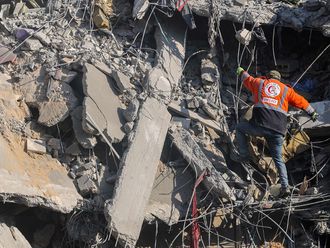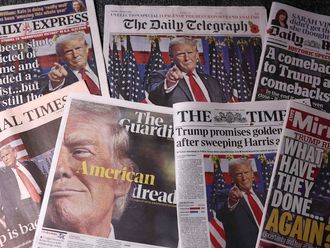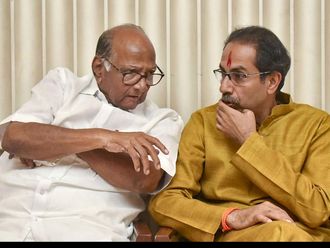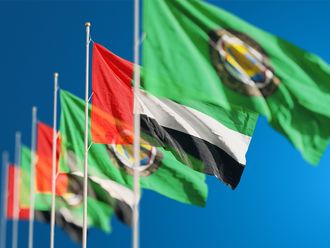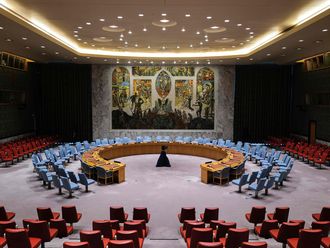
The colourful tableaux once again slowly meandered down Rajpath, the military might had its day to shine in the bleak Delhi winter and a parade of marching contingents in sync to the tunes of 17 bands put its best foot forward. But the day, perhaps this year more than others is as much about celebration as it is about introspection.
26 January signifies India’s final transition from the British rule. Even though the country gained independence in 1947, it was only on this day in 1950 that the Indian Constitution drafted by Dr B R Ambedkar came into effect replacing the colonial era Government of India Act (1935).
This was the birth of a Republic, a union of states which came together under the preamble of ‘Justice’, ‘Liberty’, ‘Equality’ and ‘Fraternity’, an idea whose time for an egalitarian society had come through the lens of Ambedkar’s Dalit background. There was no footnote, each line was a promise and even if ‘assuring dignity to all,’ hadn’t been drafted, it was the unspoken promise.
Constitution was a destination
From Ambedkar, Nehru, Patel to all the others who partook in the journey, the Constitution was a destination. The framework allowed them to start putting fragmented pieces into a federal whole, their ideology was to embrace and rebuild.
India rose from the riots and ashes of partition, where displaced people left families behind and came as refugees to a new- born country. Those who did the heavy lifting to uplift would have been broken to see how in death, they are being played against each other.
To see their decisions through the myopia of modern India is to dismiss the idea of India itself. On their chosen paths they had some differences, but they rose above them - Sardar Patel openly acknowledged Nehru as his leader after Gandhi’s death and the four brigades of Netaji’s Indian National Army were named after Gandhi, Nehru, Chandrashekhar Azad and Subhash Bose himself. Those leaders were statesman, the country came first.
India was always a feudal society. The medieval kings plundered, the British looted and despite what the Constitution outlined, and the years gone by that have dimmed the memory of the British rule, the have nots still struggle to make a dent. Socialism is outdated, but uncapped capitalism has its filters. In the last two years the deprivation has come from within, but it is still a plundering, nevertheless.
The income gap during the lockdown became more like an unbreachable chasm as consumption growth stagnated. A Pew survey finds that India’s middle class shrunk by 32 million in 2020 driving 75 million Indians into poverty and inflating the poor. At the same time 1% of India’s rich kept adding to their riches.
An Oxfam report says India’s billionaires increased their wealth by 35% in the lockdown with Asia’s richest man Mukesh Ambani earning rupees 90cr an hour.
Merely spectators on sidelines
In 2017, this top-strata had 73% of the country’s wealth with the country’s wealthiest 98 people accounting for 41% of the Indian budget. India added 40 new billionaires during the pandemic reminding us that once again we remain divided — this time between the entitled and those who are merely spectators on the sidelines, watching as the cast changes but not the plot. The ignominy is not in the act, but in being caught. Sometimes not even then.
Yet this is an India that had a head start despite the circumstances of its birth. The Constitution introduced voting rights equally and Indira Gandhi became the Prime Minister of the country when the first world of America has only come as close as a woman vice-president and that too very recently.
But the glass ceiling still resists. As we celebrate Republic Day, a court continues to hear debates on criminalising marital rape laws, hopefully it will have a better outcome than the Women’s Reservation Bill which has been in cold storage for the last 25 years.
The Indian Republic was envisaged as a reformist country where states and the union were partners and constitutional supremacy was never second to the Parliament or to silence. Where nationalism was about rebuilding and not appropriation and where different languages was our strength. Article 1 of our Constitution says ‘India that is Bharat is a union of states,’ and yet as the pandemic showed, some were more equal than the others.
Growing up, 26 January was one school holiday that was so much more. As children we were firmly ensconced in front of the television much before the parade telecast started. There was pride in the diversity of a country that treasured its sociocultural coming together. Sadly, it is being shaped to play second fiddle to homogeneity, mortgaged by divisiveness.
The march past is always glorious, but the optics hide the unease, and it has nothing to do with leaving childhood behind. Perhaps the innocence of those days would have still found some excuses as it sees the shape of our Constitution tenuous while flames of the past are being extinguished.
The scars of partition may have healed but we have fresh wounds. Our strength though lies in bouncing back, the unforgettable legacy of our forefathers.
We, The People of India.



